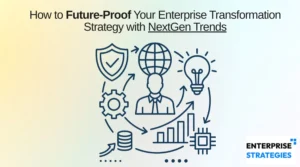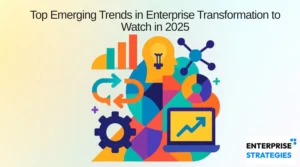Organizations must evolve continuously to stay relevant and thrive. Agile Enterprise Transformation has emerged as a powerful approach for companies seeking to enhance adaptability, speed, and customer-centricity across their operations.
Defining Agile Enterprise Transformation
Agile Enterprise Transformation refers to the comprehensive process of adopting agile principles, methodologies, and mindsets across an entire organization—not just in IT departments. Unlike traditional project-based agile adoption, enterprise transformation fundamentally reshapes how the business operates, makes decisions, and delivers value.
At its core, agile enterprise transformation involves:
- Reorganizing around customer value streams rather than functional silos
- Implementing cross-functional teams empowered to make decisions
- Adopting iterative delivery with short feedback cycles
- Creating a culture of continuous improvement and experimentation
- Developing adaptive leadership approaches that enable rather than control
As our advisory services team has observed, the most successful transformations align agile practices with strategic business objectives rather than pursuing agility for its own sake.
Key Differences Between Agile and Digital Transformation
While often mentioned together, agile transformation and digital transformation serve different purposes:
| Aspect | Agile Transformation | Digital Transformation |
| Primary Focus | Ways of working, culture, and organizational structure | Technology modernization and digital capabilities |
| Core Objective | Increase adaptability and responsiveness | Leverage technology for business model innovation |
| Main Drivers | Market uncertainty and need for faster delivery | Digital disruption and changing customer expectations |
| Implementation Scope | Organizational structure, processes, and mindset | Technology stack, data utilization, and digital channels |
| Measurement | Delivery tempo, team autonomy, customer satisfaction | Digital adoption rates, automation levels, data utilization |
Many organizations find that agile transformation enhances the effectiveness of digital initiatives, creating a symbiotic relationship between the two approaches.
The Six Pillars of Agile Enterprise Transformation
A comprehensive agile enterprise transformation addresses six critical dimensions:
1. Strategic Alignment and Vision
Successful transformations begin with a clear vision that connects agile adoption to strategic business objectives. Leadership must articulate why agility matters to organizational success and how it will create competitive advantage.
Key elements include:
- Defining specific business outcomes the transformation will enable
- Aligning agile practices with strategic priorities
- Creating measurable objectives to track transformation progress
- Communicating a compelling case for change across the organization
2. Leadership and Cultural Evolution
Agile transformation requires significant shifts in leadership approaches and organizational culture. Leaders must move from command-and-control to enabling and coaching styles.
Critical aspects include:
- Developing servant leadership capabilities
- Creating psychological safety for experimentation
- Modeling transparency and collaboration
- Reinforcing agile values through actions and decisions
- Implementing decentralized decision-making frameworks
Our work in enterprise evolution and change management has consistently shown that leadership commitment is the single most important factor in transformation success.
3. Organizational Structure and Teams
Traditional hierarchical structures often impede agility. Transforming organizations typically reorganize around customer value streams with cross-functional teams.
Key structural elements include:
- Forming value stream-aligned teams with end-to-end capabilities
- Implementing scaled agile frameworks appropriate to the organization
- Creating communities of practice to share knowledge
- Reducing handoffs between departments
- Establishing clear team boundaries and autonomy
4. Process and Ways of Working
Agile enterprises fundamentally change how work flows through the organization, replacing sequential processes with iterative, collaborative approaches.
Core process changes include:
- Adopting iterative planning and delivery cycles
- Implementing visual management of work
- Establishing continuous feedback loops with customers
- Creating standardized yet flexible team practices
- Developing portfolio management approaches for enterprise-wide prioritization
5. Technology and Tools
While technology isn’t the primary focus of agile transformation, supporting tools and architecture are essential enablers.
Key technology considerations include:
- Implementing DevOps practices and automation
- Adopting collaborative tools for distributed teams
- Creating technology architectures that support independent delivery
- Developing continuous integration/continuous delivery capabilities
- Leveraging AI and automation to enhance agility
6. Metrics and Continuous Improvement
Agile enterprises establish new measurement systems focused on outcomes and value rather than output and activity.
Essential measurement approaches include:
- Tracking business value delivered rather than just activity
- Measuring customer satisfaction and engagement
- Monitoring team health and engagement
- Assessing time-to-market and responsiveness
- Implementing regular retrospectives at multiple levels
The Business Benefits of Agile Enterprise Transformation
Organizations that successfully implement agile enterprise transformation realize significant competitive advantages:
1. Enhanced Market Responsiveness
Agile enterprises can pivot quickly in response to changing market conditions, customer needs, and competitive threats. This responsiveness provides a significant advantage in volatile markets.
Measurable impacts include:
- 60% faster time-to-market for new offerings
- 40% increase in product innovation rate
- 50% reduction in time to implement strategic pivots
2. Improved Customer Focus and Satisfaction
Agile enterprises organize around customer value streams, enabling deeper understanding of customer needs and more responsive product development.
Measurable impacts include:
- 25-30% increase in customer satisfaction scores
- 35% improvement in Net Promoter Scores
- 45% reduction in customer-reported defects
3. Higher Employee Engagement and Retention
Agile organizations typically feature greater autonomy, purpose, and mastery—key drivers of employee engagement and satisfaction.
Measurable impacts include:
- 30% increase in employee engagement scores
- 25% reduction in voluntary turnover
- 40% improvement in innovation contributions from employees
4. Enhanced Operational Efficiency
By eliminating waste, reducing handoffs, and focusing on value delivery, agile enterprises achieve significant operational improvements.
Measurable impacts include:
- 20-30% increase in productivity
- 25% reduction in operational costs
- 35% decrease in rework and waste
5. Greater Predictability and Transparency
Iterative delivery, visual management, and empirical planning create greater predictability and transparency across the enterprise.
Measurable impacts include:
- 60% improvement in delivery predictability
- 40% increase in stakeholder trust scores
- 30% reduction in governance overhead
Key Challenges in Agile Enterprise Transformation
While the benefits are compelling, organizations face significant challenges in their transformation journeys:
1. Middle Management Resistance
Middle managers often face the greatest disruption in agile transformations as their traditional control-oriented roles evolve toward enabling and coaching functions.
2. Balancing Standardization and Team Autonomy
Organizations struggle to find the right balance between consistent enterprise practices and team-level autonomy and experimentation.
3. Legacy Systems and Technical Debt
Existing technology infrastructure and technical debt often limit the ability to implement agile delivery practices effectively.
4. Misalignment of Supporting Functions
HR, Finance, Procurement, and other support functions must evolve their practices to enable rather than constrain agility.
5. Measurement and Governance Evolution
Traditional measurement and governance systems focused on predictability and control often conflict with agile principles of adaptation and empirical management.
Critical Success Factors for Agile Enterprise Transformation
Our experience guiding organizations through successful transformations has identified these critical success factors:
1. Executive Sponsorship and Active Participation
Transformation requires visible, active leadership participation beyond verbal support. Leaders must model new behaviors and remove organizational impediments.
2. Clear Connection to Business Outcomes
The transformation must clearly connect to strategic business priorities and measurable outcomes rather than process changes for their own sake.
3. Systemic Approach
Successful transformations address all dimensions—leadership, structure, process, technology, and metrics—rather than focusing solely on team-level practices.
4. Incremental Implementation
Organizations that implement change incrementally, learn from experience, and adapt their approach achieve more sustainable results than those pursuing “big bang” transformations.
5. Investment in Capability Building
Sustainable transformation requires substantial investment in building new capabilities through training, coaching, and hands-on experience.
The Agile Transformation Journey: A Roadmap
Most successful transformations follow a similar path, though the specific timeline and approach vary based on organizational context:
Phase 1: Foundation and Alignment (3-6 months)
- Establish transformation vision and objectives
- Secure executive sponsorship and alignment
- Develop baseline measurements
- Create initial transformation roadmap
- Identify and prepare pilot areas
Phase 2: Pilot Implementation (6-12 months)
- Implement agile practices in selected value streams
- Provide intensive coaching and support
- Capture lessons learned and success stories
- Refine approach based on feedback
- Develop internal change agents
Phase 3: Organizational Scaling (12-24 months)
- Extend transformation to additional value streams
- Address systemic barriers and impediments
- Evolve supporting functions (HR, Finance, etc.)
- Develop communities of practice
- Implement enterprise-level agile capabilities
Phase 4: Continuous Evolution (Ongoing)
- Foster ongoing experimentation and adaptation
- Refine metrics and measurement approaches
- Build advanced capabilities
- Address emerging challenges
- Connect agile capabilities to innovation initiatives
Is Your Organization Ready for Agile Enterprise Transformation?
Consider these key readiness indicators:
- Do you face increasing market pressure for faster innovation and responsiveness?
- Is your organization experiencing challenges with cross-functional collaboration?
- Are customer needs changing rapidly in ways that outpace your ability to respond?
- Do you struggle with long time-to-market for new products and services?
- Is employee engagement declining due to bureaucracy and lack of autonomy?
- Are your competitors moving faster and demonstrating greater adaptability?
If you’ve answered yes to several of these questions, your organization may be ready to explore agile enterprise transformation.
Next Steps: Beginning Your Transformation Journey
Ready to explore how agile enterprise transformation could benefit your organization? Consider these initial steps:
- Assessment: Evaluate your organization’s current agility and identify key improvement opportunities.
- Executive Alignment: Build shared understanding and commitment among senior leaders.
- Vision Development: Create a compelling vision for your agile enterprise.
- Roadmap Creation: Develop an incremental transformation roadmap.
- Early Win Identification: Select initial focus areas likely to demonstrate value quickly.
Our team at Enterprise Strategies specializes in guiding organizations through successful agile enterprise transformations. We bring deep expertise in both agile methodologies and enterprise change management to help you navigate this complex journey.
To discuss how we could support your transformation, contact us at info@enterprisestrategies.com for a complimentary consultation.




